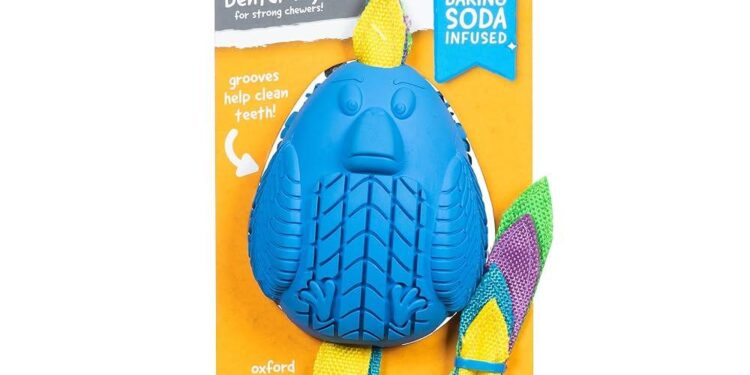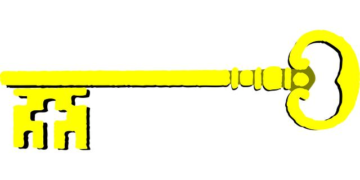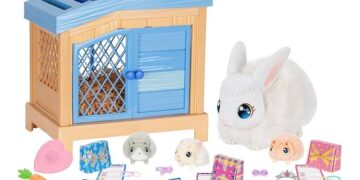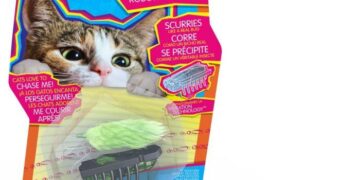Table of Contents
I spent years studying animal biomechanics, but it took a $4,000 vet bill and a lesson from structural engineering to finally understand the truth about dog chews.
Introduction: The Sound I’ll Never Forget
The sound was sharp, unnatural, and loud enough to cut through the evening quiet.
It was a sickening crack, like a thick branch snapping underfoot, but it came from the corner of my living room.
My eyes shot to Leo, my goofy, four-year-old Golden Retriever.
He was lying on his favorite rug, working on a large, “all-natural” beef marrow bone I’d proudly bought him from a boutique pet store.
He stopped chewing, looked up at me with a slightly bewildered expression, and then gave a tentative lick to the side of his mouth.
In that moment, I wasn’t just a dog owner.
I’m a veterinary researcher with a focus on animal biomechanics.
I’ve published papers on joint stress and tissue mechanics.
I understood, on an academic level, the forces at play in a dog’s jaw.
And yet, I had walked into the same trap as millions of other well-meaning owners.
I had trusted the marketing.
“Natural.” “Durable.” “Great for dental health.”
Over the next few days, the signs were subtle, almost imperceptible.
Leo, who usually inhaled his kibble, began to eat more slowly, chewing carefully on one side of his mouth.1
His favorite game of tug-of-war was met with a new reluctance.
As a researcher, I knew these were classic indicators of oral pain, but as his owner, a cold dread began to set in.
Dogs are masters at hiding their discomfort, a survival instinct that masks suffering until it becomes severe.2
The visit to the veterinary dental specialist confirmed my worst fears.
The X-rays lit up the screen, and the diagnosis was immediate and severe: a complicated crown-root fracture of his right upper fourth premolar—the large, critical chewing tooth known as the carnassial.2
The fracture was a clean, vertical split, a “slab fracture,” and it ran below the gumline.
Worst of all, the crack had exposed the pulp, the living inner tissue of the tooth containing the nerve and blood vessels.2
This meant Leo was in constant pain, with a high risk of a deep-seated infection that could spread throughout his body.
The gut-punch came with the treatment options.
We could attempt a root canal, a complex procedure performed by a specialist that would cost upwards of $4,000.
Or we could proceed with a surgical extraction, which was less expensive but still a major procedure requiring general anesthesia and a painful recovery.1
A simple $15 bone had led to this heartbreaking and costly dilemma, a scenario echoed in countless online forums where distraught owners share stories of their own chew-related disasters.5
That experience was more than just a costly mistake; it was a professional and personal failing.
How could I, someone who studies these very principles, have let this happen? It ignited a mission.
I threw myself into a systematic, professional-level investigation, not just to find a “better bone,” but to understand the fundamental principles of safety that the pet industry so often ignores.
I needed to create a system—a reliable framework that could cut through the marketing noise and empower every dog owner who has ever stood in a pet store aisle, paralyzed by confusion and fear.
This is the story of that journey, and the surprisingly simple, powerful framework it produced.
Part I: The Three Dangerous Myths of the Dog Chew Aisle
My investigation began where most owners do: in the chew aisle, surrounded by a dizzying array of products all promising a happy, occupied dog.
I realized that our choices are often guided by a few powerful, pervasive, and deeply flawed myths.
To find a true solution, I first had to deconstruct the lies that led to Leo’s broken tooth.
Myth #1: “Natural is Always Safer.” (The Bone, Antler, and Hoof Fallacy)
The most seductive myth is the appeal to nature.
We’re told that dogs are descendants of wolves, and wolves chew on bones.
It’s an “ancestral” behavior, so giving our dogs a real bone, an antler, or a hoof seems like the most natural, wholesome choice.6
I bought into this myself.
Leo’s marrow bone was marketed as a “primitive” and “natural” chew.
The problem is that this romanticized view of nature ignores a critical mismatch in biomechanics.
A dog’s tooth is a marvel of evolution, but it has its limits.
The outer layer, the enamel, is incredibly hard, but many “natural” chews are even harder.3
Weight-bearing leg bones from cattle, antlers (which are essentially bone), and cow hooves are notoriously dense materials.3
When a dog clamps down with its powerful jaw, especially on the carnassial teeth which are designed for shearing meat, not crushing rock, all that force is concentrated on a single point.
If the chew doesn’t give, the tooth will.
This is precisely what causes a slab fracture, one of the most common dental injuries seen by veterinary dentists.2
Veterinarians have developed simple rules of thumb to help owners assess this risk.
The most famous is the “thumbnail test”: if you cannot make an indentation on the chew’s surface with your thumbnail, it is too hard for your dog’s teeth.1
Another is the “kneecap rule”: if you wouldn’t want to be hit in the kneecap with it, it’s too hard.10
Antlers, marrow bones, and hooves fail these tests spectacularly.
Beyond the fracture risk, the “natural” category hides another danger: splintering.
The way a bone is prepared dramatically changes its properties.
Cooked bones, which are often sold as smoked or roasted treats, become dry and brittle.
When a dog chews them, they are prone to shattering into sharp, dagger-like fragments.
These shards can cause horrific injuries, including lacerations to the mouth and tongue, choking, and life-threatening perforations of the esophagus, stomach, or intestines.11
The U.S. Food and Drug Administration (FDA) has issued explicit warnings about these commercially sold “bone treats,” linking them to dozens of reports of illness, injury, and even death.14
Many proponents argue that raw bones are safer because they are softer and less likely to splinter.
While the splintering risk is lower, it is not eliminated, and the fracture risk from these dense bones remains exceptionally high.12
Furthermore, raw bones introduce a significant biological hazard: bacterial contamination.
Raw meat products are frequently contaminated with pathogens like
Salmonella, E.
coli, and Listeria, which pose a risk not only to the dog but to every human in the household.6
The causal chain is tragically clear: we are sold a story about the “wild,” but we are given a product whose extreme hardness creates a biomechanical certainty of risk.
The allure of “natural” is a marketing tactic that directly leads to pain, infection, and expensive, traumatic surgeries.
Myth #2: “Rawhide Keeps Them Busy and Out of Trouble.” (The Chemical and Obstruction Nightmare)
If natural bones are a minefield, many owners pivot to what seems like the next logical choice: rawhide.
It’s been a staple for decades, promising hours of chewing satisfaction.
The myth here is that rawhide is a simple, harmless product—just dried animal skin.
The reality is far more complex and dangerous.
The term “rawhide” is a misnomer; it is anything but raw.
It is a byproduct of the leather industry, and its journey from a cow’s back to the pet store shelf is a heavily industrial one.
The process typically begins with splitting the hide, with the tough outer layer going to make leather goods and the soft inner layer destined to become rawhide.
This inner hide is then subjected to a series of chemical baths to remove hair and fat and to prevent putrefaction.
These can involve substances like sodium sulfide liming and, in some facilities, quaternary ammonium compounds—disinfecting agents not intended for consumption.15
After being washed and shaped, it is dried.
This opaque manufacturing process, often occurring in overseas facilities with inconsistent oversight, creates the first major risk: chemical contamination.
In 2017, this risk became a reality when United Pet Group issued a massive voluntary recall for multiple brands of rawhide chews, including American Beefhide, Healthy Hide, and Digest-eeze, as well as several private-label store brands.17
The reason was the discovery that their manufacturing facilities in Mexico and Colombia were using a quaternary ammonium compound as a processing aid.
The company had received numerous reports from consumers of an unpleasant chemical odor, as well as dogs suffering from vomiting and diarrhea after consuming the treats.17
This incident laid bare the dangers of a globalized supply chain where safety can be compromised for production efficiency.
Even if a rawhide chew is free of chemical contaminants, it poses a more insidious physical threat: gastrointestinal obstruction.
The very nature of rawhide is to soften and become pliable as a dog chews.
An aggressive chewer can easily tear off large, rubbery chunks.
Unlike food, these pieces are not easily digestible.15
If swallowed, they can become lodged in the esophagus or pass into the stomach or intestines, where they can swell and cause a life-threatening blockage.15
This is a true veterinary emergency, often requiring major surgery to resolve.
The knotted ends of classic rawhide bones are particularly notorious for being chewed off and swallowed whole, creating a perfect plug.5
The ASPCA acknowledges this danger explicitly in its position statement, advising owners to limit the amount of rawhide consumed and to discourage the consumption of significant pieces, noting that the risk of obstruction is especially high for smaller dogs.20
The contradiction at the heart of rawhide is that the product’s primary failure mode is catastrophic.
It doesn’t wear down safely; it sets the stage for a potential emergency.
Myth #3: “‘Indestructible’ Nylon is the Modern, Safe Solution.” (The Hardness Paradox)
Frustrated by the risks of natural bones and rawhide, many modern dog owners turn to technology.
Engineered chews made from hard nylon or plastic, like those from popular brands Nylabone and Benebone, seem to offer the perfect solution.
They are marketed as being ultra-durable, long-lasting, and safe, especially for “aggressive chewers”.21
This was the final myth I had to dismantle, and it contains the most subtle and dangerous trap of all.
The promise of these chews is their indestructibility.
But this very feature is their fundamental design flaw.
They achieve their durability through extreme hardness.
The problem is, they are often harder than a dog’s teeth.
This creates the exact same biomechanical risk as a natural bone: when a powerful chewer clamps down, the unyielding surface of the nylon can cause a tooth to fracture.3
You don’t have to take a vet’s word for it; the manufacturers themselves acknowledge the risk.
Benebone’s own safety guide states it plainly: “Benebone durable chews are made of nylon, which is a hard substance.
Aggressive chewing can cause chips or cracks in teeth and possibly result in tooth loss or removal…
Tooth injury is an unavoidable risk when using chew toys of this hardness and durability”.25
This is a stunning admission.
The product is functioning exactly as designed—by being incredibly hard—and this function carries an inherent, unavoidable risk of causing the very injury owners are trying to prevent.
This creates a dangerous paradox.
The marketing term “for aggressive chewers” actively funnels the owners of the most powerful dogs—Pit Bulls, Rottweilers, German Shepherds—towards the hardest possible products.22
These are precisely the dogs with the jaw strength to generate enough force to break their own teeth on these unforgiving surfaces.
The industry has created a product category where the main selling point is also the primary safety flaw.
Beyond the fracture risk, there is also the danger of ingestion.
While these chews are designed to be gnawed on, not eaten, aggressive chewers can and do break off pieces.
The manufacturers advise that if shavings the size of a grain of rice are ingested, they should pass harmlessly.
However, if larger chunks are broken off and swallowed, they can cause a dangerous gastrointestinal blockage.26
Because nylon is a plastic, these pieces are entirely indigestible.
Deconstructing these three myths left me in a state of profound frustration.
The market was a minefield of false promises and hidden dangers.
Recommending a specific product felt like a temporary fix in a system that was fundamentally broken.
I needed a new way of thinking.
I needed a first principle for safety, a mental model that could be applied to any chew, now or in the future.
I found it in the most unexpected of places.
Part II: The Epiphany in an Unlikely Place: A Lesson from a Skyscraper
After Leo’s surgery and recovery, my quest for answers became an obsession.
I had a mountain of “don’ts” but no reliable “do.” Every product seemed to have a fatal flaw.
Natural bones broke teeth.
Rawhide caused blockages.
Nylon was a paradox of hardness.
I felt stuck.
How could I create a reliable safety system out of this chaos?
The breakthrough came late one night, deep down a research rabbit hole that had led me far from veterinary science.
I was reading about seismic engineering—the science of building structures that can withstand earthquakes.
And there, in a technical paper, I saw a diagram and a term that stopped me in my tracks: the “dogbone” connection, also known as a Reduced Beam Section (RBS).29
The concept was brilliant and, at first glance, completely counterintuitive.
In a large, steel-frame building, one of the most vulnerable points during an earthquake is the connection where a horizontal beam meets a vertical column.
This joint is subjected to immense stress.
If it fails—if the weld snaps or the steel fractures—the result can be catastrophic.29
For years, engineers tried to solve this by making the connection itself stronger and stronger, reinforcing it with extra plates and massive welds.
But this often just moved the problem elsewhere and created new issues.
The “dogbone” approach flipped the problem on its head.
Instead of infinitely strengthening the connection, engineers decided to strategically weaken the beam itself, just a short distance away from the critical column joint.
They would trim away a portion of the top and bottom flanges of the beam, creating a curved, narrowed section that looked like, of all things, a cartoon dog bone.29
This trimmed section acts as a “ductile fuse.” It is a designated, engineered weak point.
When the immense forces of an earthquake shake the building, all the stress and bending is designed to concentrate in this “dogbone” section.
This section is engineered to deform, bend, and absorb a massive amount of energy without breaking.
It fails gracefully and predictably, protecting the far more critical—and brittle—welded connection at the column.
By sacrificing a small amount of strength in one non-critical area, engineers gain a massive increase in ductility and overall structural safety.29
Reading this, it felt like a light switch flipped on in a dark room.
This was it.
This was the principle I had been searching for.
The dog chew industry had it all wrong.
They were all trying to build indestructible columns.
They were obsessed with hardness and durability, marketing chews that could “withstand the toughest chewers.” But in doing so, they were creating brittle, unforgiving products that transferred all the destructive force directly to the “critical connection”—the dog’s teeth.
My epiphany was this: A safe dog chew should not be indestructible; it should be designed to fail safely. It should act like a ductile fuse.
Its primary safety feature isn’t its longevity; it’s its failure mode.
A safe chew should yield, soften, crumble, or wear away in a predictable, non-hazardous manner, absorbing the force of the dog’s jaw and protecting their teeth at all costs.
This single idea from structural engineering gave me the key.
It was no longer about finding the “perfect product.” It was about building a framework for evaluating any product based on this fundamental principle of safe failure.
I called it the “Structural Safety” framework.
Part III: The “Structural Safety” Framework: 4 Principles for Choosing Dog Chews
Armed with the “dogbone” principle, I developed a simple, four-part framework to systematically evaluate any dog chew.
This system moves beyond brand names and marketing hype, empowering you to make decisions like an engineer assessing a structure for safety.
It’s the exact system I now use for my own dogs, and it has brought clarity and confidence back to a process once filled with anxiety.
Principle 1: Demand a “Ductile Fuse” — The Chew Must Fail Safely
This is the cornerstone of the entire framework.
Before you ask, “Will this last a long time?” you must first ask, “How will this break down under stress?” A chew’s most important safety feature is its failure mode.
We must fundamentally shift our thinking from celebrating indestructibility to demanding safe, predictable degradation.
- Good Failure (Ductile): A chew with a good failure mode yields to the force of chewing in a non-hazardous way. It might soften and become more pliable, allowing the dog to gnaw without risk of fracture (like some VOHC-approved rawhide chews that are designed to be digestible).30 It might crumble into small, sand-like particles that are easily swallowed and passed (like certain vegetable-based or wood-based chews).31 Or it might wear down slowly into a paste that gets scraped away. In all these cases, the chew absorbs the energy, protecting the teeth.
- Bad Failure (Brittle): A chew with a brittle failure mode is one that cannot safely yield. It either resists the force entirely or breaks apart in a dangerous way.
- Fracture Failure: It remains rock-hard, transferring 100% of the chewing force back into the tooth, leading to a slab fracture. This is the failure mode of antlers, nylon bones, and weight-bearing femurs.3
- Splinter Failure: It shatters into sharp, indigestible shards that can puncture the mouth, throat, or gut. This is the classic failure mode of cooked bones.11
- Chunk Failure: It allows large, indigestible pieces to be torn off, creating a choking or obstruction hazard. This is the failure mode of rawhide knots and cow hooves.5
Applying this principle alone immediately disqualifies a huge portion of the products on the market.
If a chew’s response to stress is to be unyieldingly hard or to break into dangerous pieces, it is not a safe choice.
Principle 2: Assess Material Integrity — From Sourcing to Your Dog’s Mouth
An engineer would never build a bridge without knowing the precise grade and quality of the steel.
Likewise, we must become scrutineers of the materials our dogs are ingesting.
This goes beyond the main ingredient and extends to the entire supply chain.
- Application: Look for products with transparent sourcing and minimal processing. Phrases like “Sourced and made in the USA” are a good starting point, as they suggest a more regulated and traceable supply chain.16 Read the ingredient list. It should be short and understandable. Avoid products with vague terms like “animal derivatives,” artificial preservatives (such as BHA and BHT, which are controversial), and artificial smoke flavorings, which have been anecdotally linked to health issues in sensitive dogs.14
The consequences of ignoring material integrity can be severe.
The widespread recalls of rawhide due to chemical contamination from foreign plants are a stark reminder of what can happen in an opaque supply chain.17
Even more disturbing are recent reports from the European Union about specific brands of dog chews imported from China being potentially linked to a neurological condition nicknamed “werewolf syndrome,” causing symptoms from panic attacks to seizures.34
While no cases were confirmed in the UK or US, the possibility of purchasing such products online highlights the global nature of the market and the importance of knowing where your dog’s chews come from.
Material integrity isn’t just about “natural” vs. “synthetic”; it’s about quality control, safety, and transparency from farm to muzzle.
Principle 3: Conduct a “Stress Test” — The Kneecap and Thumbnail Rules
Before you let your dog’s powerful jaws test a chew, you should perform a simple, manual stress test yourself.
This is your hands-on, in-store diagnostic, allowing you to cut through marketing claims with a dose of physical reality.
Veterinary dental specialists have endorsed these simple rules for years.
- The Thumbnail Test: Press your thumbnail firmly into the surface of the chew. If you cannot leave a dent or mark, the object is too hard.1 A safe chew should have some “give.”
- The Kneecap Rule: Hold the chew in your hand and tap it against your kneecap. If it hurts, or if you instinctively flinch, it is too hard and heavy to be a safe chew toy.10
- The Hammer Rule: Ask yourself, “Could I use this to hammer a nail into a piece of wood?” If the answer is yes, do not give it to your dog.10
These simple, tactile tests are surprisingly effective.
They immediately filter out the most dangerous offenders: antlers, thick marrow bones, cow hooves, and hard nylon chews.
They empower you, the consumer, to make a rapid safety assessment right in the aisle, regardless of what the packaging claims.
Principle 4: Consult the “Blueprint” — The VOHC Seal of Acceptance
In structural engineering, builders must follow established building codes and blueprints that have been vetted by experts.
In the world of canine dental health, the closest equivalent we have is the Veterinary Oral Health Council (VOHC).
- What it is: The VOHC is not a government regulator, but an independent organization of board-certified veterinary dental specialists. Its purpose is to evaluate the scientific evidence behind claims that a product helps control plaque and tartar.30
- How it works: Manufacturers voluntarily submit their product and the results of their clinical trials to the VOHC. The council of experts then reviews this data to see if the product meets a pre-set standard for dental efficacy. They do not conduct the tests themselves; they review the evidence.30
- What the Seal Means: If a product is awarded the VOHC Seal of Acceptance, it means it has been scientifically proven to be effective at reducing either plaque or tartar (or both) by a statistically significant amount. Crucially, this review process inherently includes a safety assessment. While it’s not an absolute guarantee against all risks for every individual dog, it is the single most reliable, evidence-based, third-party validation available on the market.36
Looking for the VOHC seal is like consulting the approved blueprint.
It tells you that a product has not only been designed with a dental benefit in mind but has also passed the scrutiny of experts in the field.
It is the final and most powerful principle in the framework for identifying chews that are engineered for safety.
Part IV: A Vet Researcher’s Guide to the Chew Aisle: Applying the Framework
With the “Structural Safety” framework in hand, we can now walk back into the daunting chew aisle with confidence.
Instead of a chaotic mess, we can see the products organized into a clear hierarchy of risk.
To make this even simpler, I’ve organized my recommendations into a Chew Safety Pyramid.
!(placeholder_image_chew_safety_pyramid.png)
Tier 1: The Gold Standard (The “Engineered for Safety” Chews)
This is the pinnacle of the pyramid.
These products best embody all four principles of the framework, especially Principle 4 (Consult the Blueprint).
They are designed not just to be chewed, but to do so in a way that is both safe and beneficial for dental health.
The most reliable way to identify these products is to look for the VOHC Seal of Acceptance.
This seal signifies that the product has undergone scientific testing to prove its effectiveness and has been reviewed for safety by veterinary dental specialists.36
Your search for the safest chew should always begin here.
The full, updated list is always available on the VOHC website, but the table below includes some of the most widely available and well-regarded examples.
| Product Name | Company | Type | VOHC Claim | Key Feature/Consideration |
| Greenies Dental Chews | Mars PetCare | Edible Chew | Plaque, Tartar | Highly palatable, available in multiple sizes and formulas (e.g., grain-free, aging care).30 |
| OraVet Dental Hygiene Chews | Boehringer Ingelheim | Edible Chew | Tartar | Contains delmopinol, which creates a barrier to help prevent bacteria from attaching to teeth.30 |
| C.E.T. VEGGIEDENT FR3SH Chews | Virbac | Edible Chew | Plaque, Tartar | Plant-based (good for dogs with protein sensitivities), Z-shape helps scrape teeth from multiple angles.30 |
| Purina DentaLife Daily Oral Care Treats | Nestle Purina | Edible Chew | Tartar | Porous texture helps clean hard-to-reach teeth; made without artificial colors or flavors.30 |
| Milk-Bone Brushing Chews | Big Heart Pet Brands | Edible Chew | Tartar | Features nubs and ridges designed to clean like bristles on a toothbrush.30 |
| WHIMZEES BRUSHZEES/Toothbrush Chews | WellPet | Edible Chew | Plaque, Tartar | All-natural, gluten-free, vegetable-based chews in whimsical shapes that promote chewing.30 |
| Tartar Shield Soft Rawhide Chews | Tartar Shield | Rawhide Chew | Tartar | One of the few rawhide products with VOHC acceptance, designed to be softer and more digestible.30 |
This table is a representative sample.
For a complete and current list, please consult the official VOHC website.
Data sourced from.30
Tier 2: Conditionally Safe (The “Inspect and Supervise” Chews)
This middle tier includes popular products that do not carry the VOHC seal but can be safe if they are selected and used with strict adherence to the framework.
For this category, active and constant supervision is non-negotiable.20
These chews require you to be the primary safety engineer.
- Yak Cheese Chews:
- Framework Analysis: These chews, made from hardened yak and/or cow milk, generally have a good “Ductile Fuse”—they soften as the dog licks and chews.28 Their “Material Integrity” is usually high, with simple, natural ingredients.31 However, they can be very hard initially, potentially failing the “Thumbnail Test” for some dogs. Their biggest risk is a “Chunk Failure” at the end; the final small piece poses a significant choking hazard.21
- Recommendation: A good option for moderate, persistent chewers rather than powerful crunchers. Crucially, you must remove the final end piece. A popular hack is to microwave this small nub for about 45-60 seconds, which causes it to puff up into a crunchy, safe-to-eat cheese puff.
- Coffee Wood:
- Framework Analysis: Coffee wood’s “Ductile Fuse” is excellent; it doesn’t splinter into sharp pieces but rather breaks down into soft, digestible fibers.32 Its “Material Integrity” is also strong, being an all-natural wood product with no chemicals. It passes the “Stress Test” as it has some give compared to bone.
- Recommendation: A fantastic alternative for dogs that are naturally drawn to chewing on sticks. Ensure you purchase one that is appropriately sized for your dog to prevent any possibility of swallowing it whole.
- Bully Sticks (Pizzles):
- Framework Analysis: These are highly palatable, single-ingredient chews (dehydrated bull penis) that are fully digestible, giving them good “Material Integrity”.40 However, they fail the “Ductile Fuse” principle at the very end. The last one- to two-inch piece becomes soft and slippery, and dogs frequently swallow it whole, creating a serious choking or intestinal blockage risk.19
- Recommendation: Bully sticks should only be given with a tightly fitting, high-quality bully stick holder. These safety devices grip the stick, making it impossible for the dog to swallow the final, dangerous piece. Choose products with transparent, US-based sourcing to minimize contamination risks.
- Durable Rubber Toys (e.g., KONG Classic):
- Framework Analysis: These are a star performer in this tier. Their “Ductile Fuse” is their flexibility; they are tough but not brittle. Their “Material Integrity” is excellent when purchased from a reputable brand that uses non-toxic, durable rubber.42 They easily pass the “Stress Test.”
- Recommendation: An outstanding and safe choice for nearly all dogs. Select the appropriate size and durability level (e.g., KONG offers Classic, Extreme, and Puppy versions). Their true value is unlocked when stuffed with food (like kibble mixed with peanut butter or yogurt) and frozen, turning them into a long-lasting enrichment puzzle that satisfies the chewing urge safely.43 Always inspect regularly for signs of damage and discard if pieces are breaking off.
Tier 3: The High-Risk List (The “Just Walk Away” Chews)
This is the base of the pyramid—the products that fundamentally violate the principles of the “Structural Safety” framework.
The risks associated with these items are, in my professional and personal opinion, unacceptable.
No amount of supervision can prevent a tooth from fracturing on an object that is harder than enamel.
This is my definitive “do not buy” list.
- All Animal Bones (Cooked, Smoked, or Raw): They fail due to brittle or fracture failure. The risk of tooth fractures, mouth lacerations, and internal perforation or blockage is simply too high.6
- Antlers and Hooves: They fail the “Stress Test” catastrophically. Their extreme hardness makes them a leading cause of painful slab fractures.3
- Hard Nylon/Plastic Bones: They represent the “Hardness Paradox.” Their marketing as “indestructible” is a red flag for their risk of fracturing teeth. The manufacturers’ own warnings confirm this risk is unavoidable.3
- Ice Cubes: A surprising but common culprit. Their density and hardness can easily cause micro-cracks or full fractures in teeth.3
- Sticks, Rocks, and other Found Objects: These are uncontrolled hazards. Sticks can splinter and impale soft tissues, while rocks are an obvious fracture risk.8
- Tennis Balls (as a chew toy): While great for fetching, the abrasive fuzz on a tennis ball acts like sandpaper, wearing down precious tooth enamel over time. This is exacerbated when the ball picks up dirt and grit.3 Opt for smooth rubber balls instead.
Conclusion: From a Broken Tooth to an Unbreakable Bond
Leo’s recovery was slow but steady.
After his root canal, the subtle signs of pain vanished.
The joy returned to his game of tug-of-war, and he once again dove into his food bowl with his signature Golden Retriever gusto.
The chew toys in our home look very different now.
The basket that once held thick bones and hard nylon now holds VOHC-approved dental chews, a coffee wood stick, and a well-loved KONG that gets stuffed and frozen every morning.
The journey that began with the sickening sound of a cracking tooth—a moment of fear, guilt, and failure—ultimately led to a place of clarity and confidence.
The “Structural Safety” framework didn’t just give me a list of “good” and “bad” products; it gave me a new way to see.
It taught me to question the marketing, to test the material, to demand evidence, and to prioritize safe failure over false promises of indestructibility.
My hope is that this framework does the same for you.
The goal is not to create fear, but to replace it with empowerment.
You don’t have to be a veterinary researcher or a structural engineer to protect your dog.
You just need to learn to ask the right questions.
So the next time you stand in that chew aisle, I urge you to ignore the flashy marketing on the front of the bag.
Turn it over.
Read the ingredients.
Apply the framework.
Use your thumbnail.
Tap it on your knee.
Look for the VOHC seal.
Your dog is trusting you to build a safe world for them, one chew at a time.
By making that choice with knowledge and care, you are doing more than just buying a treat; you are strengthening an unbreakable bond.
Works cited
- Fractured Teeth in Dogs and Cats – Veterinary Partner – VIN, accessed August 12, 2025, https://veterinarypartner.vin.com/default.aspx?pid=19239&id=12367342
- Fractured Teeth in Dogs | VCA Animal Hospitals, accessed August 12, 2025, https://vcahospitals.com/know-your-pet/fractured-teeth-in-dogs
- 5 Chew Toys to Avoid – Friendship Hospital for Animals, accessed August 12, 2025, https://friendshiphospital.com/dentistry/chew-toys-to-avoid/
- Fractured Teeth in Dogs: Symptoms, Treatment, & Prevention, accessed August 12, 2025, https://vetdentistwi.com/fractured-teeth-in-dogs-symptoms-treatment-prevention/
- [DISCUSSION] Be mindful of the bones you give your pup for …, accessed August 12, 2025, https://www.reddit.com/r/dogs/comments/al3xia/discussion_be_mindful_of_the_bones_you_give_your/
- The Fitdog Guide to Bone Treat Safety, accessed August 12, 2025, https://www.fitdog.com/blog/bone-treat-safety/
- Leisure bones for small dogs – Champdogs Forum, accessed August 12, 2025, https://forum.champdogs.co.uk/topic_show.pl?tid=36646
- 7 Chew Toys That Can Damage Your Dog’s Teeth | Cherry Hill Animal Hospital, accessed August 12, 2025, https://www.cherryhillanimalhospital.com/blog/7-chew-toys-that-can-damage-your-dog-s-teeth
- Are bones safe for dogs to chew? | Greensboro Vet, accessed August 12, 2025, https://www.guilfordjamestownvet.com/site/blog-greensboro-vet/2024/03/15/dog-bone-safety
- Safe and Appropriate Chew Toys for Dogs – Animal Dental Specialist, accessed August 12, 2025, https://animaldentalspecialist.com/safe-and-appropriate-chew-toys-for-dogs/
- What Bones or Chews Should Dogs Avoid? | Port Royal SC | Vet, accessed August 12, 2025, https://www.portroyalveterinaryhospital.com/what-bones-or-chews-should-dogs-avoid
- Dog Bone Safety: What You Need to Know | Zoetis Petcare, accessed August 12, 2025, https://www.zoetispetcare.com/blog/article/dog-bone-safety
- Choking Hazards for Dogs | UK Pet Food, accessed August 12, 2025, https://www.ukpetfood.org/resource/choking-hazards.html
- FDA Warning: Store-Bought ‘Bone Treats’ Could Kill Your Dog | Dog Food Advisor, accessed August 12, 2025, https://www.dogfoodadvisor.com/dog-food-recalls/fda-warning-store-bought-bone-treats-could-kill-your-dog/
- Imitation Bones: Are They Safe for Your Dog? – East Valley Animal Hospital, accessed August 12, 2025, https://www.eastvalleyanimal.com/imitation-bones/
- Dangerous & Unhealthy Dog Food Treats | Bossier City, LA, accessed August 12, 2025, https://www.bossiercity.org/275/Dangerous-Unhealthy-Dog-Food-Treats
- United Pet Group Voluntary Recalls Multiple Brands of Rawhide Chew Products for Dogs Due to Possible Chemical Contamination | FDA, accessed August 12, 2025, https://www.fda.gov/safety/recalls-market-withdrawals-safety-alerts/united-pet-group-voluntary-recalls-multiple-brands-rawhide-chew-products-dogs-due-possible-chemical
- United Pet Group Expands Voluntary Recall of Multiple Brands of Rawhide Chew Products for Dogs to Also Include Private Label Brands Due to Possible Chemical Contamination | FDA, accessed August 12, 2025, https://www.fda.gov/safety/recalls-market-withdrawals-safety-alerts/united-pet-group-expands-voluntary-recall-multiple-brands-rawhide-chew-products-dogs-also-include
- Protecting Your Pet from Common Choking Hazards | Advanced Veterinary Specialists, accessed August 12, 2025, https://www.avs4pets.com/blog/protecting-your-pet-from-common-choking-hazards
- Position Statement on Dog Chews/Treats | ASPCA, accessed August 12, 2025, https://www.aspca.org/about-us/aspca-policy-and-position-statements/position-statement-dog-chewstreats
- Bones Aggressive Chewers – Walmart, accessed August 12, 2025, https://www.walmart.com/c/kp/bones-aggressive-chewers
- Benebone Reviewed by Dog Trainers | Suburban K9, accessed August 12, 2025, https://suburban-k9.com/benebone-product-review/
- Everything You Need to Know About Nylabone | HPM – Happy Pup Manor, accessed August 12, 2025, https://happypupmanor.com/everything-you-need-to-know-about-nylabone/
- toegrips.com, accessed August 12, 2025, https://toegrips.com/safe-chewing-toys-for-dogs-chews-wisely/#:~:text=Nylabones%20and%20other%20synthetic%20nylon,recommend%20nylon%20bones%20for%20dogs.
- www.benebone.com, accessed August 12, 2025, https://www.benebone.com/pages/nylon-safety#:~:text=Benebone%20durable%20chews%20are%20made,in%20tooth%20loss%20or%20removal.
- Nylon Safety Guide | Benebone: Durable Dog Chew Toys Made in the USA, accessed August 12, 2025, https://www.benebone.com/pages/nylon-safety
- Are Benebones Safe for Dogs? What to Do If They Swallow It – Careers Collectiv, accessed August 12, 2025, https://careerscollectiv.com/are-benebones-safe-for-dogs-what-to-do-if-they-swallow-it/
- Are nylonbones safe for dogs? 6 Healthier Nylonbone Alternatives – Tibetan Dog Chew, accessed August 12, 2025, https://tibetandogchew.com/blogs/blog/are-nylabones-safe-for-dogs
- THE DOGBONE CONNECTION: PART II – American Institute of Steel …, accessed August 12, 2025, https://www.aisc.org/globalassets/modern-steel/archives/1996/08/1996v08_dogbone.pdf
- Veterinary Oral Health Council | Finding the most effective route to …, accessed August 12, 2025, https://www.vohc.org/
- Dog Bones and Treats – Golden Retriever Rescue of Atlanta, accessed August 12, 2025, https://www.grra.com/post/dog-bones-and-treats
- Comparing Chewing Materials for Dogs: A Deep Dive, accessed August 12, 2025, https://coffeewooddogchew.com/comparing-chewing-materials-for-dogs-a-deep-dive/
- What’s The Safest Bone For Aggressive Chewers? – K9 Connoisseur, accessed August 12, 2025, https://k9connoisseur.com/blogs/news/whats-the-safest-bone-for-aggressive-chewers
- Pet owners issued warning over popular dog chews as ‘serious behavioural changes’ reported – Manchester Evening News, accessed August 12, 2025, https://www.manchestereveningnews.co.uk/news/uk-news/product-recalls-dog-behaviour-warning-31015416
- Precautionary advice issued to pet owners on dog chews linked to illness, accessed August 12, 2025, https://www.food.gov.uk/news-alerts/news/precautionary-advice-issued-to-pet-owners-on-dog-chews-linked-to-illness
- Choosing the Right Chew Toys and Treats for Your Pet: A Guide Backed by the VOHC, accessed August 12, 2025, https://www.tribecavetdentistry.com/post/choosing-the-right-chew-toys-and-treats-for-your-pet-a-guide-backed-by-the-vohc
- Safe Chews for Dogs | Animal Hospital of North Asheville, accessed August 12, 2025, https://www.ahna.net/site/blog-asheville-vet/2020/03/30/safe-chews-dogs
- 6 Choking Hazards You and Your Dog Should Avoid – PrideBites, accessed August 12, 2025, https://pridebites.com/blogs/barking-post-blog/6-choking-hazards-you-and-your-dog-should-avoid
- Benebone safe to chew? : r/puppy101 – Reddit, accessed August 12, 2025, https://www.reddit.com/r/puppy101/comments/1ggnzw1/benebone_safe_to_chew/
- Power Chewer Dog Bones & Treats | Best Bully Sticks, accessed August 12, 2025, https://www.bestbullysticks.com/collections/power-chewers
- Easily Digestible Dog Chews – Best Bully Sticks, accessed August 12, 2025, https://www.bestbullysticks.com/collections/chews
- Durable Dog Chew Toy for Aggressive Chewers! Long-Lasting, Non-Toxic, Perfect for Large Breeds. Shop Now! – DHgate, accessed August 12, 2025, https://www.dhgate.com/goods/1034700902.html
- Bones, Antlers, & Hard Toys Should Come with A Warning – Midtown Veterinary Hospital, accessed August 12, 2025, https://midtownvethospital.com/bones-antlers-hard-toys-should-come-with-a-warning/
- Toys and Chews – Tyler Animal Clinic – Mentor, OH, accessed August 12, 2025, https://www.tyleranimalclinic.com/toys-and-chews.pml






